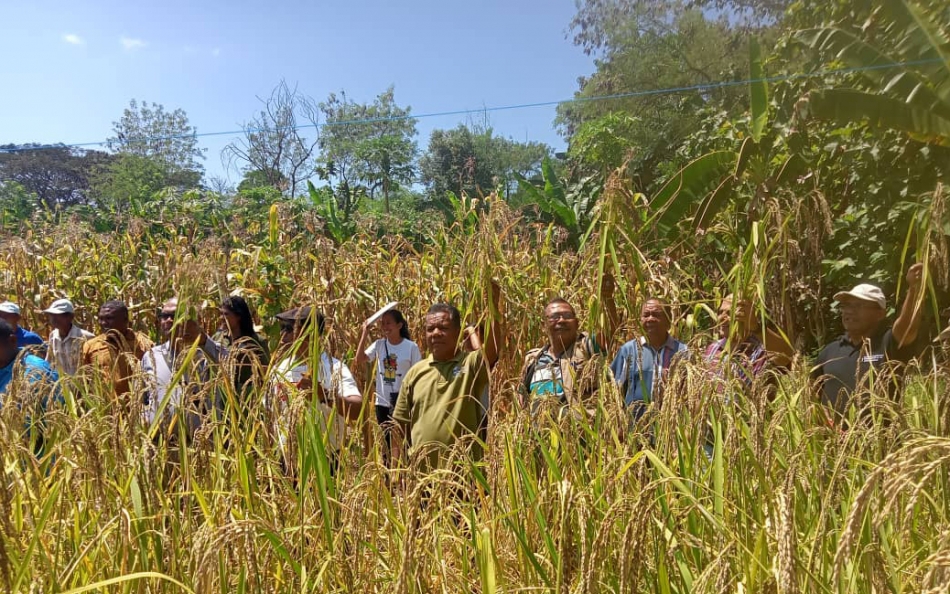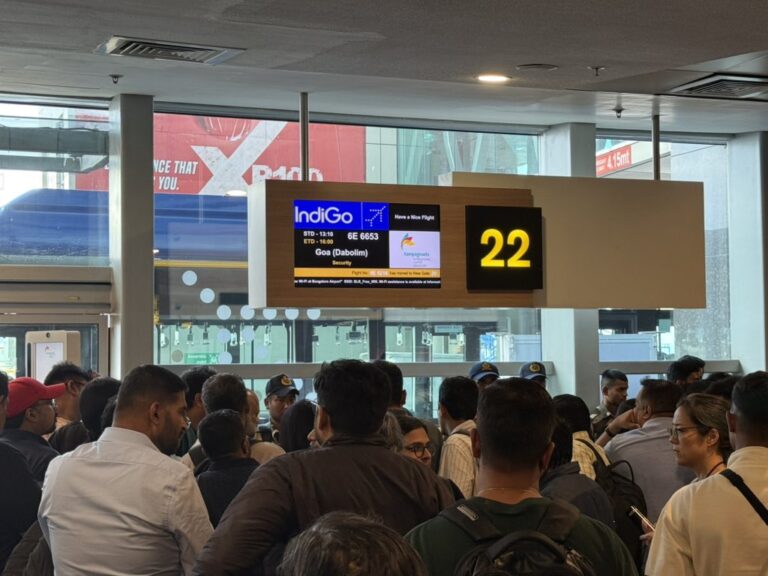
©FAO
From staunch opponent, Joaquim Caldas, changed his mind to become a leading champion of ‘Conservation Agriculture’ in Timor-Leste. Today he has transformed his land.
Joaquim took some serious convincing about the idea of adopting Conservation Agriculture (CA). But now, the 67-year-old farmer from the village of Uma Boco, near the north coast of Timor-Leste, is one of the most enthusiastic champions of the approach.
CA, which is centred on not churning up the soil more than necessary, keeping the land covered and promoting a diversity of plant species, has been promoted in Timor-Leste for the last decade by the Food and Agriculture Organization of the United Nations (FAO) and its partners, the United States Agency for International Development (USAID) and the European Union (EU). The practices aim at improving the productivity of the terrain, which has steadily deteriorated under the traditional slash-and-burn agriculture once widely practised by local farmers.

At the heart of the CA technique, as it’s being applied in Timor-Leste, is the intermittent planting of what local people call lehe, or velvet beans, for nearly three months until they grow into thick vines. These are then cut, rolled and left to decompose, covering the soil and providing fertile mulch before planting a main crop of maize. The lehe kills most weeds and eliminates the need for chemical fertilisers.
The practice generally also has great appeal for farmers because CA does away with the need for ploughing, ending some of the hard manual labour involved in farming.
Ploughing was a particularly hard task for Joaquim who lost one hand in a farm accident back in 1980. Since then, he has had to contend with the strenuous task of pushing his plough with a single hand over his 1.5-hectare plot of land.
Yet, whether because of determination or disbelief, Joaquim was set against the idea when FAO started implementing a CA project in his village of Uma Boco in 2013.
Funded by USAID, the project created farmers’ groups and provided the villagers with inputs and training on CA for the maize crop.
But when the trainers recommended that the farmers plant lehe as a cover crop before planting the major crop, Joaquim refused, arguing that planting these beans for three months would unnecessarily occupy the land and result in the loss of an entire harvest. He and several other members then quit the farmer’s group and continued conventional planting practices.
Despite their resistance, FAO continued promoting CA practices in Uma Boco. These efforts eventually paid off after a few years of implementation with increased land utilisation rates, more fertile and productive soil and less erosion and weeds. These positive results gradually convinced increasing numbers of farmers to start adopting CA practices.

Joaquim was still reluctant until he secretly tested CA on a small plot by developing mulch from lehe. He saw a clear increase in productivity compared to his conventional way of growing maize. Eventually, in 2018, Joaquim re-joined the farmer’s group, taking part in an EU-funded project implemented by FAO, aimed at supporting drought-affected communities.
Since then, Joaquim managed to produce more than one tonne of maize per season from his plot of land, which used to yield only about 375 kilograms. This not only allowed him to meet his family’s needs but also gave him a surplus to sell.
Asked about his initial resistance and subsequent change of heart on CA practices, Joaquim explains: “My initial thought about CA practices was guided by the loss of three months, which could have been used for growing maize, but that was spent cultivating lehe.”
But after experimenting with the technique, he says, “Better crops in the demo plots and no need for ploughing gradually inspired me to try CA practises and the results opened my eyes forever.”
Soon, Joaquim was not just using the CA techniques on his own land but voluntarily promoting them to his fellow villagers.
FAO additionally supported Joaquim’s group to buy a tractor, a trailer and a roller-crimper. He uses the equipment to cultivate his land more efficiently, while also encouraging his neighbours to use it for more effective CA on their plots.
Encouraged by the remarkable results of CA for maize, Joaquim also tested it for growing upland rice and found it increased productivity there too. To drum up support for the use of CA in upland rice farming, Joaquim worked with the Ministry of Agriculture, Livestock, Fisheries and Forestry to organise promotional activities for it on his farm.
In the latest of these in September 2023, he showed off a yield of 2.5 tonnes of upland rice per hectare. This was a remarkable outcome, as when the land was used to cultivate maize, the yield was capped at approximately 1 tonne per hectare. Moreover, the price of maize is merely half that of upland rice so this harvest marked a large potential increase in income.
One step ahead of his neighbours, Joaquim is already planning to try out CA practices to grow mung beans and vegetables in his field.
Though CA is a relatively new practice in Timor-Leste, reluctance like Joaquim’s in adopting these practices was not uncommon. However, FAO’s persistence and support, along with clear evidence of better results, have motivated the farmers to gradually change their conventional practices. Judging from the experience so far, the changes in mindset that have happened gradually are nonetheless proving more lasting.
Source: the FAO News and Media office, Rome
– global bihari bureau





